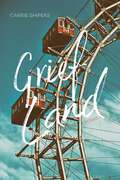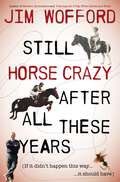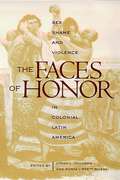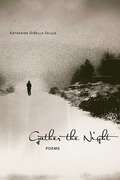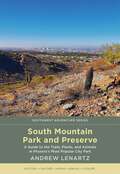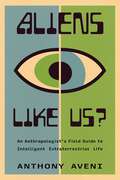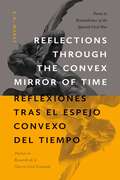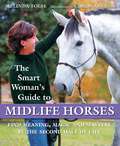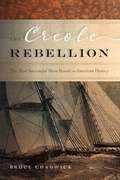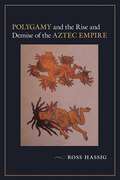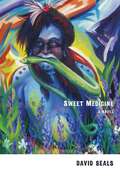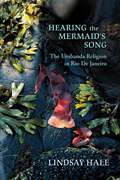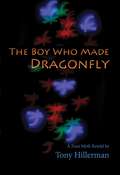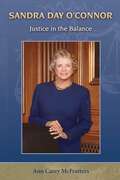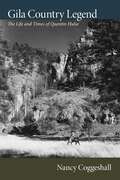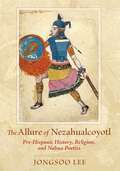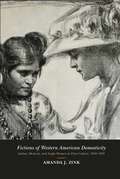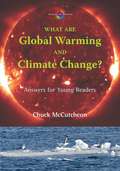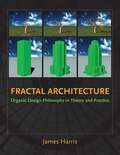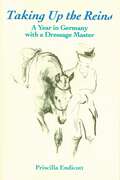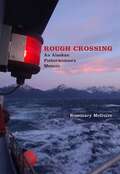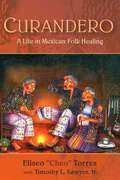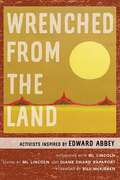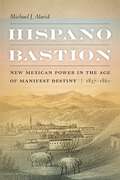- Table View
- List View
Grief Land: Poems (Mary Burritt Christiansen Poetry Series)
by Carrie ShipersIn Grief Land Carrie Shipers explores the paradoxical nature of bereavement as both a universal human experience and an intensely personal one. The poems interrogate and dismiss common notions of loss and recovery through a series of letter-poems—to authors who have written about grief, to the speaker&’s dead husband, and to a society that believes it has the right to dictate how a widow should feel and act. The collection explores living with grief without being consumed by it and how to emerge into a new life.
Still Horse Crazy After All These Years
by James WoffordA rare insider's look at the life of a professional sportsman as he tries to reconcile the passion that drives him with livelihood, family, and aging.Known for his wit, irreverence, and whip-smart observations on equestrian sport and its participants, three-time Olympian Jim Wofford's writing is as legendary as his performances in the saddle. Now he again brings his immense talent for telling tales—all of them (mostly) true—to the page in his autobiography.Growing up on a Kansas farm that shared a border with Fort Riley, home to the U.S. Cavalry School from 1887 to 1949, and the son of a sporting Army-man who rode in uniform in the 1932 Olympics, Wofford shares his wholly unique perspective on horsemanship and the history of equestrian competition in the United States. We track his ascendancy from one-room schoolhouse, to Culver Military Academy, to the United States Equestrian Team headquarters in Gladstone, New Jersey, during its heyday. Along the way, Wofford introduces some of history's great horses and the people who loved them as he strives to reach the top of the international eventing scene. Fascinating stories from his many adventures around the world contribute to this honest, funny, poignant read certain to entertain and educate every horse person.
The Faces of Honor: Sex, Shame, and Violence in Colonial Latin America (Diálogos Series)
by Lyman L. Johnson Sonya Lipsett-RiveraA contemporary of Columbus noted those crazy Spaniards have more regard for a bit of honor than for a thousand lives. This obsession flourished in the New World, where status, privilege, and rank became cornerstones of the colonial social order. Honor had many faces. To a freed black woman in Brazil it proscribed spousal abuse and permitted her to petition the Church for permission to leave her husband. To a high church official charged with sodomy in Alto Peru, honor signified the privileges and legal exceptions available to those of his background and social position. These nine original essays assess the role and importance men and women of all races and social classes accorded honor throughout colonial Latin America.The best work on honor in Latin America and an invaluable and insightful volume. A must for both scholars and classroom use.--Professor Susan M. Socolow, Emory University
Up the Winds and Over the Tetons: Journal Entries and Images from the 1860 Raynolds Expedition
by William F. RaynoldsIn the late 1850s many of the most striking places in Wyoming, Idaho, and Montana had not yet been surveyed by any government expedition. This book brings to life the expedition that first explored these regions. As the last major government survey of the American West before the Civil War, the Raynolds Expedition began in 1859. This highly readable daily journal of Captain William F. Raynolds, previously unpublished, covers the most challenging period of that expedition, from May 7 to July 4, 1860. It describes what the Raynolds party did and saw while traveling from its winter quarters near today&’s Glenrock, Wyoming, up to the head of the Wind River, through Jackson Hole, and on to the Three Forks of the Missouri in southwestern Montana. The party included legendary mountain man Jim Bridger, geologist Ferdinand Hayden, and artists Anton Schönborn and James Hutton, among the first to depict the Teton Range.Historians, travelers, and outdoor enthusiasts will welcome this important addition to the literature of western exploration.
Gather the Night: Poems (Mary Burritt Christiansen Poetry Series)
by Katherine DiBella SelujaThis debut collection reads like an elegy, not just for the author&’s brother Lou, stricken with schizophrenia, but for all families affected by mental illness. Through multiple personae and a variety of styles, Seluja offers a gritty authenticity and empathy to the subjects and themes. These poems grieve for a world of the lost while extending solace to those who remain and remember.
South Mountain Park and Preserve: A Guide to the Trails, Plants, and Animals in Phoenix's Most Popular City Park (Southwest Adventure Series)
by Andrew LenartzIn the heart of the city of Phoenix, Arizona, sits the natural wonder of South Mountain Park and Preserve. It is an oasis of mountain terrain and desert landscapes, comprising more than ninety miles of hiking trails in over sixteen thousand acres, easily accessible to the residents and visitors of the fifth-largest city in the United States.Longtime Phoenix resident and outdoor enthusiast Andrew Lenartz guides readers through the extensive history of the park; the park&’s ecosystem, with an overview of the plants, animals, landscape, and topography of the Sonoran Desert environment; the many trails in each of the four sections of South Mountain Park; and a variety of other outdoor activities found within the park. Designed for all ages, the trail maps and descriptions note access points, facilities, elevation gain, and level of difficulty, pointing the way for all hikers to enjoy their trek. A true southwestern treasure, this all-inclusive guide encourages readers to discover the nature and adventure available in this massive outdoor playground.
Aliens Like Us?: An Anthropologist's Field Guide to Intelligent Extraterrestrial Life
by Anthony AveniIn this authoritative, accessible, and at times funny and irreverent work, distinguished anthropologist Anthony Aveni speaks to the trained astrophysicist and the curious layperson alike about a simple but previously unexplored question: Why do we assume aliens, if they are really out there, behave just like us?Aveni’s newest work departs from the usual scientific treatment of extraterrestrial intelligence by probing the historical and widely neglected anthropological record, which offers relevant analogous incidents of contact among terrestrial cultures. Beginning with theories of the evolution of life and culture advocated by astrobiologists, Aliens Like Us? explores how the Western cultural imagination is influenced by ways of knowing that are deeply embedded in the minds of the questioners—for example, how we consider the ownership of property, the idea of progress, and even the way we classify things. The lessons of anthropology offer not only value structures from other cultures that differ profoundly from our own but also testify to the diverse ways in which "alien" cultures interact.Finally, on the question of potential first contact, Aveni closes with a fascinating exploration of the image of extraterrestrials in popular culture that is derived in part from the hugely influential realm of science fiction.
Reflections through the Convex Mirror of Time / Reflexiones tras el Espejo Convexo del Tiempo: Poems in Remembrance of the Spanish Civil War / Poemas en Recuerdo de la Guerra Civil Española (Mary Burritt Christiansen Poetry Series)
by E.A. MaresIn this poignant bilingual collection, preeminent New Mexican poet E. A. &“Tony&” Mares posthumously shares his passionate journey into the broken heart and glimmering shadows of the Spanish Civil War, whose shock waves still resonate with the political upheavals of our own times. Mares engages in dialogue with heroes and demons, anarchists and cardinals, and beggars and poets. He takes us through the convex mirror of history to the blood-stained streets of Madrid, Guernica, and Barcelona. He interrogates the assassins of Federico García Lorca for their crimes against poetry and humanity. Throughout the collection the narrator is participant and commentator, and his language is both lyrical and direct. In addition to Mares&’s parallel Spanish and English poems, the book includes a prologue by Enrique Lamadrid, an introduction by Fernando Martín Pescador, and an epilogue by Susana Rivera. Lovingly shepherded and completed by friends and family, this book will appeal to Mares enthusiasts and readers interested in poetry and history, who will be glad to have this unexpected gift from a master&’s voice.
Smart Woman's Guide to Midlife Horses
by Melinda FolseWHEN YOU WERE A LITTLE GIRL, did you dream of horses, choosing Breyers over Barbies— plastic horses over plastic dolls? FOR THE PAST SEVERAL DECADES, has your life been more about taking care of others than taking care of yourself while your dreams have gathered dust on long forgotten shelves? ARE YOU AT THAT POINT IN LIFE when you've begun to wonder whether you'll ever find the courage to do all the things you wanted to do someday? Offering horses as both metaphor and solution to the natural malaise that often rears its head just about the time we blow out that midlife birthday candle, this is the book that will help you ask (and answer), What about my dreams? and Is it my turn yet? and If not now, when? and best of all, If now, how?
The Creole Rebellion: The Most Successful Slave Revolt in American History
by Bruce ChadwickThe Creole Rebellion tells the suspenseful story of a successful mutiny on board the slave ship Creole. En route for a New Orleans slave-auction block in November 1841, nineteen captives mutinied, killing one man and injuring several others. After taking control of the vessel, mutineer Madison Washington forced the crewmen to sail to the Bahamas. Despite much local hysteria upon their arrival, all of the 135 slaves aboard the ship won their freedom there.The revolt significantly fueled and amplified the slave debate within a divided nation that was already hurtling toward a Civil War. While this is a book about the United States confronting the ugly and tumultuous issue of slavery, it is also about the 135 enslaved men and women who were unwilling to take their oppression any longer and rose up to free themselves in a bloody fight. Part history, part adventure, and part legal drama, Bruce Chadwick chronicles the most successful slave revolt in the pages of American history.
Polygamy and the Rise and Demise of the Aztec Empire
by Ross HassigThis provocative examination of Aztec marriage practices offers a powerful analysis of the dynamics of society and politics in Mexico before and after the Spanish conquest. The author surveys what it means to be polygynous by comparing the practice in other cultures, past and present, and he uses its demographic consequences to flesh out this understudied topic in Aztec history. Polygyny provided Aztec women with opportunities for upward social mobility. It also led to increased migration to Tenochtitlan and influenced royal succession as well as united the empire. Surprisingly, the shift to monogamy that the Aztecs experienced in a single generation took over a millennium to occur in Europe. Hassig&’s analysis sheds new light on the conquest, showing that the imposition of monogamy—rather than military might, as earlier scholars have assumed—was largely responsible for the strong and rapid Spanish influence on Aztec society.
Sweet Medicine: A Novel
by David SealsThis sequel to Seals&’s acclaimed novel The Powwow Highway recounts the further adventures of Philbert Bono, Buddy Red Bird, and Bonnie Red Bird in a soul-searching vision quest for self-discovery that is by turns exhilarating, hilarious, profane, and achingly beautiful.
Hearing the Mermaid's Song: The Umbanda Religion in Rio de Janeiro
by Lindsay HaleThe Umbanda religion summons the spirits of old slaves and Brazilian Indians to speak through the mouths of mediums in trance. Its practitioners worship African gods, often calling them by the names of Catholic saints; simultaneously embrace the concepts of karma, reincarnation, and Christian charity; and believe in the capacities of both modern science and ancient magic. A relatively new religion dating to the beginning of the twentieth century, Umbanda has its origins in Rio de Janeiro and its surrounding urban areas where Afro-Brazilians, many ex-slaves or the descendants of slaves, practiced versions of the religion handed down to them by their ancestors. Umbanda's popularity has grown tremendously over the past century, attracting not only those who seek the assistance of spirits in solving problems in their lives, but those in pursuit of a path to a rich spiritual life and a fellowship of faith and service.Over the course of nearly a decade, Lindsay Hale spent countless hours attending rituals and festivals and interviewing participants of Umbanda, immersing himself in this fascinating religious world. In describing its many aspects and exploring its unique place within the lives of a wide variety of practitioners, Hale places Umbanda spiritual beliefs and practices within the broader context of Brazilian history and culture.
The Boy Who Made Dragonfly: A Zuni Myth Retold by Tony Hillerman
by Tony HillermanAs readers of Tony Hillerman's detective novels know, he is a skilled interpreter of southwestern Indian cultures. In this book, first published in 1972, he recounts a Zuni myth first recorded a century ago by the anthropologist Frank Hamilton Cushing. Hillerman's version of the story, written to be read by children ten years old and up, will have equal appeal for adults with an interest in Native American culture.In our society, Hillerman explains, this would be called a 'Bible story.' Like stories based on the Old Testament, this narrative is intended to teach both the history and morality of a people. It tells the consequences of a drought in which Zuni crops were ruined and the tribe was forced to accept charity from neighboring Hopis.
Sandra Day O'Connor: Justice in the Balance (Women's Biography Series)
by Ann Carey McFeattersOn July 1, 1981, President Ronald Reagan interviewed Sandra Day O'Connor as a candidate for the United States Supreme Court. A few days later, he called her. Sandra, I'd like to announce your nomination to the Court tomorrow. Is that all right with you? Scared and wondering if this was a mistake, the little-known judge from Arizona was on her way to becoming the first woman justice and one of the most powerful women in the nation. Born in El Paso, Texas, O'Connor grew up on the Lazy B, a cattle ranch that spanned the Arizona-New Mexico border. There she learned lifelong lessons about self-reliance, hard work, and the joy of the outdoors. Ann Carey McFeatters sketches O'Connor's formative years there and at Stanford University and her inability to find a job--law firms had no interest in hiring a woman lawyer. McFeatters writes about how O'Connor juggled marriage, a career in law and politics, three sons, breast cancer, and the demands of fame.In this second volume in the Women's Biography Series, we learn how O'Connor became the Court's most important vote on such issues as abortion, affirmative action, the death penalty, the role of religion in society, and the election of a president, decisions that shaped a generation of Americans.
Gila Country Legend: The Life and Times of Quentin Hulse
by Nancy CoggeshallIf there was ever a ring-tailed roarer of the backwoods of New Mexico, he was Quentin Hulse (1926-2002). Hulse lived and worked most of his life at the bottom of Canyon Creek in the Gila River country of southwestern New Mexico, but his reputation spread far and wide. His western image appeared on a tourist postcard and souvenir license plate in the 1950s. Footage of a lion hunt led by Hulse and his hounds appeared on the Men's Channel in 2005, three years after his passing.Hulse grew up primarily in western New Mexico when that ranch and mining country was still remote and raw. At the age of ten he witnessed a point-blank shooting, the culmination of an old-fashioned frontier feud. He followed his parents between mines and towns until his father established a ranch at Canyon Creek. While serving in the navy during World War II, he landed on the bloody beach at Okinawa. After returning from the war, he was shot in a bar near Silver City during a night of carousing.Hulse was most at home in the rugged Gila Wilderness, in which he ranched and guided for fifty years. With compassion and nuance, Nancy Coggeshall tells the compelling biography of a unique western rancher constantly adjusting to the inroads of modernity into his traditional way of life. Drawing on oral history, archival sources, and her personal association with Hulse and the Gila, she brings this unique westerner, and New Mexican, to life.
The Allure of Nezahualcoyotl: Pre-Hispanic History, Religion, and Nahua Poetics
by Jongsoo LeeNezahualcoyotl (1402-1472), the poet-king of Texcoco, has been described as one of the most important pre-Hispanic figures in Nahua history. Since the conquest, European chroniclers have continually portrayed him as a symbol of Aztec civilization and culture, a wise governor and lawmaker, poet and patron of the arts, and proto-monotheist. Their chronicles have served as sources for anthropologists, historians, and literary critics who focus on these contrived images and continually reproduce the colonial propaganda on Nezahualcoyotl. This, as Jongsoo Lee argues, subsequently leads to a misrepresentation of the history, religion, literature, and politics of pre-Hispanic Mexico that are altered to support such images of Nezahualcoyotl.Lee provides a new assessment of Nezahualcoyotl that critically examines original codices and poetry written in Nahuatl alongside Spanish chronicles in an effort to paint a more realistic portrait of the legendary Aztec figure. Urging scholars away from sources that reinforce a Judeo-Christian perspective of pre-Hispanic history, Lee offers a revision of the colonial images of Nahua history and culture that have continued over the last five hundred years.
Fictions of Western American Domesticity: Indian, Mexican, and Anglo Women in Print Culture, 1850–1950
by Amanda J. ZinkThis work provides a compelling explanation of something that has bedeviled a number of feminist scholars: Why did popular authors like Edna Ferber continue to write conventional fiction while living lives that were far from conventional? Amanda J. Zink argues that white writers like Ferber and Willa Cather avoided the subject of their own domestic labor by writing about the performance of domestic labor by &“others,&” showing that American print culture, both in novels and through advertisements, moved away from portraying women as angels in the house and instead sought to persuade other women to be angels in their houses. Zink further explores lesser-known works such as Mexican American cookbooks and essays in Indian boarding school magazines to show how women writers &“dialoging domesticity&” exemplify the cross-cultural encounters between &“colonial domesticity&” and &“sovereign domesticity.&” By situating these interpretations of literature within their historical contexts, Zink shows how these writers championed and challenged the ideology of domesticity.
What Are Global Warming and Climate Change?: Answers for Young Readers (Barbara Guth Worlds of Wonder Science Series for Young Readers)
by Chuck McCutcheonGlobal warming is one of the most talked about science subjects today.Maybe you have seen pictures of polar bears or other animals stranded atop floating chunks of melting ice. Perhaps you have heard about or lived through extreme weather--hurricanes, floods, water shortages, heat waves, or electricity blackouts.Many of these events can stem from the world getting warmer. As that happens, the climate changes, too. This book helps young readers understand the sciences used to study global warming.Each chapter addresses specific questions about why the temperatures of the earth's air and oceans are rising. The information presented aligns with the findings of the Intergovernmental Panel on Climate Change: that most of the warming observed over the last half-century is due to human activities and that the impacts of global warming will be significantly negative.Using a question-and-answer format supplemented by hands-on activities, this book fosters an understanding of the complex processes at work in global warming while also enabling youngsters to think critically about their future. McCutcheon ends his book by offering young readers productive ways to think about--and act on--changes in the environment contributing to climate change.McCutcheon taps his mastery of a complicated, highly charged topic to permit young readers to become informed consumers of the sciences associated with the most urgent topic of their future--global warming.
Fractal Architecture: Organic Design Philosophy in Theory and Practice
by James HarrisThroughout history, nature has served as an inspiration for architecture and designers have tried to incorporate the harmonies and patterns of nature into architectural form. Alberti, Charles Renee Macintosh, Frank Lloyd Wright, and Le Courbusier are just a few of the well- known figures who have taken this approach and written on this theme. With the development of fractal geometry--the study of intricate and interesting self- similar mathematical patterns--in the last part of the twentieth century, the quest to replicate nature&’s creative code took a stunning new turn. Using computers, it is now possible to model and create the organic, self-similar forms of nature in a way never previously realized.In Fractal Architecture, architect James Harris presents a definitive, lavishly illustrated guide that explains both the &“how&” and &“why&” of incorporating fractal geometry into architectural design.
Taking Up the Reins
by Priscilla EndicottA charming and honest first-hand account, behind-the-scenes look at what dressage training abroad entails. In this personal memoir, the author chronicles the year she spent in Germany studying with the great dressage master Walter Christensen.
Rough Crossing: An Alaskan Fisherwoman's Memoir (River Teeth Literary Nonfiction Prize Series)
by Rosemary McGuireKnowing next to nothing about fishing, Rosemary McGuire signed on to the crew of the Arctic Storm in Homer, Alaska, looking for money and experience. Cold, hard work and starkly sexist harassment were what she found. Here is her story of life on a fishing boat as the only woman crew member. Both an adult coming-of-age tale and a candid look at the Alaskan fishing industry, this is the story of a woman in a man&’s world. Anyone who has ever longed to sail in heavy seas will relish her account of working in an ancient profession that has changed remarkably little over the course of human history.
Curandero: A Life in Mexican Folk Healing
by Torres Eliseo “Cheo” Timothy L. SawyerEliseo Torres, known as Cheo, grew up in the Corpus Christi area of Texas and knew, firsthand, the Mexican folk healing practiced in his home and neighborhood. Later in life, he wanted to know more about the plants and rituals of curanderismo. Torres's story begins with his experiences in the Mexican town of Espinazo, the home of the great curandero El Niño Fidencio (1899-1939), where Torres underwent life-changing spiritual experiences. He introduces us to some of the major figures in the tradition, discusses some of the pitfalls of teaching curanderismo, and concludes with an account of a class he taught in which curanderos from Cuernavaca, Mexico, shared their knowledge with students.Part personal pilgrimage, part compendium of medical knowledge, this moving book reveals curanderismo as both a contemplative and a medical practice that can offer new approaches to ancient problems.From Curandero . . . for centuries, rattlesnakes were eaten to prevent any number of conditions and illnesses, including arthritis and rheumatism. In Mexico and in other Latin American countries, rattlesnake meat is actually sold in capsule form to treat impotence and even to treat cancer. Rattlesnake meat is also dried and ground and sprinkled into open wounds and body sores to heal them, and a rattlesnake ointment is made that is applied to aches and pains as well.
Wrenched from the Land: Activists Inspired by Edward Abbey
by ML LincolnWrenched from the Land features sixteen interviews with some of the most iconic eco-warriors to put themselves on the line for their beliefs. The activists featured in this book are inspired by the late Edward Abbey, one of America&’s uncompromising and irascible defenders of wilderness. The book includes interviews with Terry Tempest Williams, the late Charles Bowden, Sea Shepherd Society founder Paul Watson, Jack Loeffler, Doug Peacock, Ingrid Eisenstadter, John De Puy, Bob Lippman, Derrick Jensen, Shonto Begay, Ken Sanders, Ken Sleight, the late Katie Lee, Executive Director of the Center for Biological Diversity Kieran Suckling, Earth First! cofounder Dave Foreman, and climate activist Tim DeChristopher.Some were among Abbey&’s closest friends and were the inspiration for his irreverent comedic masterpiece, The Monkey Wrench Gang. Here are mesmerizing stories about how they adapted Abbey&’s monkeywrenching ideas into a radical blueprint for direct action. Their achievements—as ingenious and fierce as the individuals in this book—will encourage readers to discover their own pathways toward positive change.
Hispano Bastion: New Mexican Power in the Age of Manifest Destiny, 1837-1860
by Michael J. AlaridIn this groundbreaking study, historian Michael J. Alarid examines New Mexico&’s transition from Spanish to Mexican to US control during the nineteenth century and illuminates how emerging class differences played a crucial role in the regime change. After Mexico won independence from Spain in 1821, trade between Mexico and the United States attracted wealthy Hispanos into a new market economy and increased trade along El Camino Real, turning it into a burgeoning exchange route. As landowning Hispanos benefited from the Santa Fe trade, traditional relationships between wealthy and poor Nuevomexicanos—whom Alarid calls patrónes and vecinos—started to shift. Far from being displaced by US colonialism, wealthy Nuevomexicanos often worked in concert with new American officials after US troops marched into New Mexico in 1846, and in the process, Alarid argues, the patrónes abandoned their customary obligations to vecinos, who were now evolving into a working class. Ultimately wealthy Nuevomexicanos, the book argues, succeeded in preserving New Mexico as a Hispano bastion, but they did so at the expense of poor vecinos.
